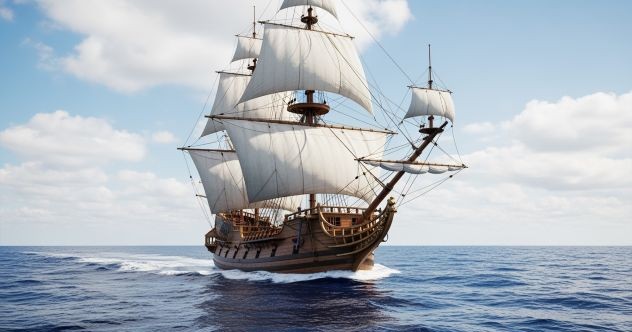Now Reading: 10 Facts About the Overlooked Pioneer of Global Navigation
-
01
10 Facts About the Overlooked Pioneer of Global Navigation
10 Facts About the Overlooked Pioneer of Global Navigation

Swift Summary:
- Ferdinand Magellan is ofen mistakenly thought to have circumnavigated the globe, but he died mid-voyage in the Philippines. His assistant Juan Sebastián Elcano completed the journey.
- Sir Francis Drake’s 1577 voyage was the first triumphant circumnavigation of the globe led by an Englishman.
- England used privateers like Drake to counter Spanish dominance at sea and expand its empire by sanctioning treasure raids on Spanish ships and ports.
- During his three-year voyage, drake:
– Raided poorly defended Spanish ports along South America and Central America’s Pacific coast.
– Captured vast amounts of treasure, including $20 million (modern valuation) worth of gold and silver from a ship off Ecuador’s coast called “Cacafuego.”
– Claimed modern-day Northern California for England under “Nova Albion.”
– Entered peaceful relations with indigenous Miwok people during his brief stay in California.
– Became a trailblazer as one of the first Europeans to cross the Pacific Ocean solo into Asia via Indonesia’s Spice Islands.
– Returned home after narrowly surviving shipwreck near Sulawesi, completing his journey through Africa’s Cape route back to England on September 26, 1580.
- Queen Elizabeth I knighted him upon return; he became famously wealthy from his ventures.
Indian Opinion Analysis:
Drake’s pivotal role in challenging Spanish maritime supremacy reflects how competition among European powers shaped colonial exploration during that era. While not directly connected to India at this time-India remained under Portuguese influence-Drake’s actions indirectly demonstrate an emerging shift toward global naval strategies aimed at wealth acquisition and territorial expansion.
For India-a historically significant hub for global trade-the intensifying rivalry between England and Spain foreshadowed Britain’s future rise as a dominant colonial power that would later extend its grip over Indian territories.The tactics employed here, such as privateering sanctioned by state actors (as seen with Queen Elizabeth I), hint at trends later observed through East India Company practices which combined commerce with political opportunism.
On a broader scale, histories like those of Drake highlight how maritime prowess became central not merely for conquest but also trade networks connecting distant continents-a legacy still resonating today in geopolitics surrounding open seas security trade routes like those near India’s coastline.


























